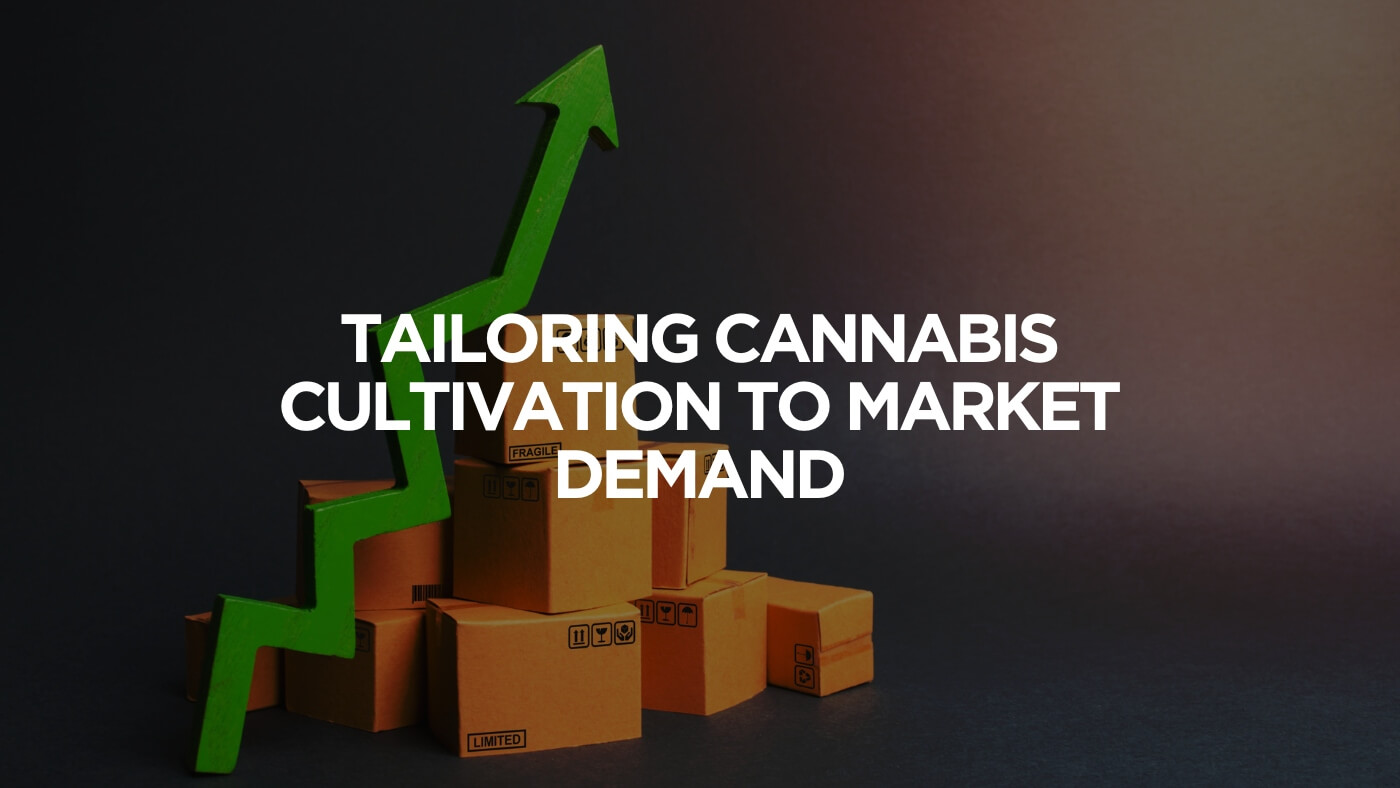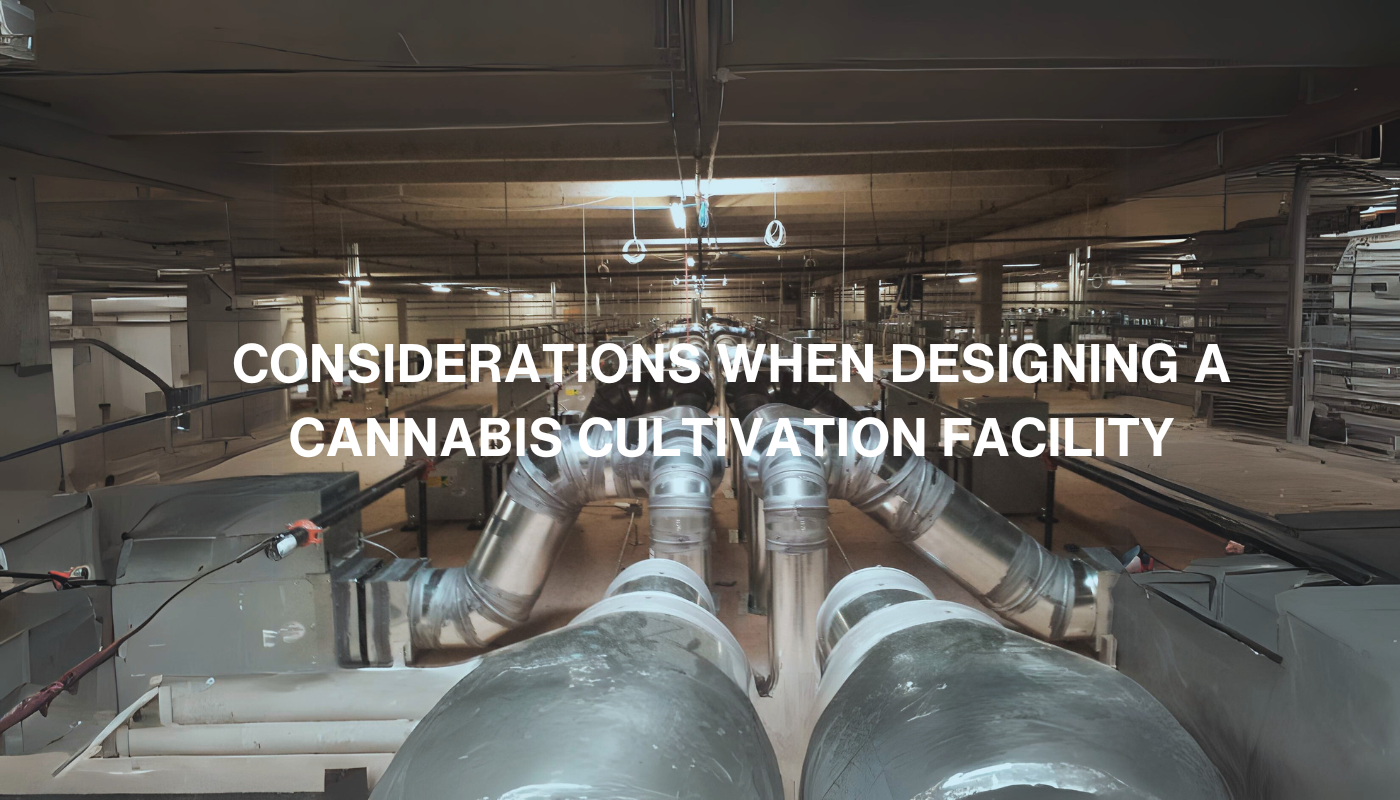
A Deep Dive Into Commercial Vertical Farming Advancements
In the past couple of years, the cannabis industry has witnessed an extraordinary transformation, evolving into a multi-million-dollar industry with a growing consumer base. This transformation, however, comes with its challenges including how to meet the demands of this thriving market.
In an era where space is limited and environmental sustainability is vital, commercial vertical farming offers a promising solution for cannabis cultivation businesses. This cutting-edge approach allows cultivators to optimize space and resources to grow an abundance of fresh products.
Whether you’re an experienced farmer looking for ways to enhance your crops or an entrepreneur exploring the opportunities of this market, commercial vertical farming is an efficient method to achieve your business goals.
In this post, we’ll delve deep into commercial vertical farming, and explore its challenges, advantages, and disadvantages. We’ll also discuss different vertical farming systems, and how they can revolutionize your cultivation business. So sit back, relax, and join us in this informative journey to the future of cannabis cultivation.
The Evolution Of The Cannabis Industry
Today, consumers have access to a wide range of cannabis products, made to answer both recreational and medical purposes. But it wasn’t long ago when this plant was stigmatized as a harmful drug, shrouded in controversy.
However, thanks to the growing body of scientific studies on cannabis, and its compounds, social attitudes began to change. Nowadays, most people are well-informed about the various therapeutic benefits of cannabis, and its numerous medical applications.
As a result, the cannabis industry has undergone unprecedented growth and captured the attention of entrepreneurs, investors, and consumers alike. According to Statista, the revenue in the medical cannabis market alone is projected to reach an impressive US$12.92 billion by 2023.
Medical Potential
Using cannabis for medical purposes is rooted in history, with evidence of it going back thousands of years.
However, with the advancements in science, today we have a large body of research highlighting its therapeutic properties. Scientists have long been able to isolate and study different cannabinoids, shedding light on the fantastic effects of cannabinoids.
For instance, THC and CBD, the two prominent compounds found in cannabis, have shown promise in alleviating symptoms associated with a wide range of medical conditions, including chronic pain, anxiety, sleep disorders, epilepsy, and multiple sclerosis. This has made cannabis products a viable alternative for patients seeking relief from various ailments.
Recreational Use
Despite its various medical effects, cannabis is mainly used as a recreational drug, offering psychoactive effects commonly known as “high”.
That said, its recreational use has not yet achieved mainstream acceptance in many regions. In many countries and states, using cannabis for recreational purposes is illegal. However, legalization efforts have started to establish regulated markets in several regions, allowing adults to enjoy cannabis responsibly and openly.
This shift in attitude and regulations has opened doors for businesses to cater to the recreational market, creating opportunities for innovative products, experiences, and even cannabis tourism.
Regulatory Challenges
As cannabis becomes widely accepted in different parts of the world, authorities establish regulatory frameworks to govern different aspects of the industry.
Cannabis regulation varies significantly between countries, states, and even municipalities. These varying and complex regulations have created unique challenges for businesses and stakeholders involved. Compliance with licensing requirements, ever-changing rules, and restrictions requires a deep knowledge of legal frameworks in each market.
Catalyst BC experts possess a comprehensive understanding of the regulatory frameworks of different markets and are ready to help you establish a successful and lawful operation. So Don’t Get Left Behind: Get Your New York Cannabis License. Our cannabis consultants help you acquire all the necessary permits without hassle.
Innovation And Diversity
To succeed in the thriving cannabis market, innovation plays a crucial role. With advancements in cultivation and manufacturing techniques, companies can now enhance the variety and quality of their products, and cater to a wide target audience.
Modern cultivation methods including commercial vertical farming and hydroponics, are maximizing efficiency and optimizing crop yields. Sophisticated extraction methods are also being developed to harness the full potential of cannabinoids, expanding product offerings and diversifying consumption options.
What Is Commercial Vertical Farming?
Commercial vertical farming is a game-changing agricultural method that has been used for some time across various sectors and has recently found its way into the cannabis industry as well.
Vertical farming involves growing cannabis plants on stacked shelves, while in conventional agriculture, farmers grow produce horizontally in large swathes of land. Using height and stacked layers, allow the operation to grow plants on top of each other to produce more products while making the most of the space.
There are two main methods for vertical farming, true vertical and stacked vertical:
Stacked Vertical
Stacked vertical is the common approach to commercial vertical farming. In this method, the plants are grown in stacked shelves or racks, using hydroponic or aeroponic systems, and automation technologies to create the optimal growing condition.
True Vertical
The true vertical is a specialized approach to commercial vertical farming in which cultivators use PVC lines called “canvas” to grow plants. Using these pipes, farmers can produce corps on the side of columns in addition to the vertical layers.
Benefits Of Commercial Vertical Farming
Commercial vertical farming has gained significant attention in the cannabis industry, pushing the boundaries to grow more and better crops. Here, we go through the advantages of this method, and how Catalyst BC’s vertical farming consultant can help enhance your cultivation operation:
Space Optimization
The primary advantage of vertical farming is its ability to make the most of limited space. By utilizing height and vertical space, commercial vertical farming helps farmers maximize their cultivation capacity.
Vertical systems allow for plants to be stacked vertically, increasing the number of plants that can be grown within a given footprint. This can be particularly advantageous for businesses located in urban areas where land is often scarce or expensive.
Increased Yields
Implementing vertical farming systems allows cultivators to grow cannabis plants in different layers, offering ideal exposure to light on all plant surfaces. This promotes uniform growth and decreases shading issues.
In addition, the closed environment of this system provides cultivators with precise control over temperature, humidity, and nutrient delivery, offering perfect conditions for plant growth. As a result, commercial vertical farming helps produce more crops per square foot than traditional horizontal methods.
Resource Efficiency
One of the primary aims of vertical farming is to reduce resource use. With efficient management of environmental factors, this approach allows cultivators to reduce water usage.
Moreover, vertical farms typically use special LED lighting systems that save energy and are made to match the specific light needs of cannabis plants. The controlled environment also helps to decrease the amount of pesticides and herbicides required, resulting in more sustainable and eco-friendly growth.
Year-Round Production
Commercial vertical farming is the practice of growing cannabis indoors using shelves and artificial lighting. This allows operations to produce plants all year long, regardless of the changing seasons.
In this system, farmers have full control over the ecosystem climate inside the shelves where plants grow. This helps provide consistent cultivation conditions, irrespective of the temperature or amount of daylight outside.
As a result, cultivators can keep a steady flow of high-quality cannabis products and enhance customers’ satisfaction, and profit.
Reduced Labor And Automation
As an advanced approach to farming, commercial vertical farming often employs cutting-edge automation technologies, including robotic arms, automatic nutrient delivery, and climate control systems.
Utilizing these technologies streamline the cultivation process, and reduces the workload. This results in a reduced cost of hiring workers and lowering the possibility of human error.
Moreover, automation systems allow cultivators to monitor and control the plants’ environment from a distance, enhancing cannabis growth and minimizing the likelihood of issues occurring.
The Cons Of Commercial Vertical Farming
As with any farming approach, commercial vertical farming also presents challenges and limitations that should be considered for a successful implementation. Here are some of the drawbacks associated with this method of farming:
High Initial Investment
Commercial vertical farming is a profitable and cost-effective approach to cultivating cannabis. However, it requires a considerable upfront investment to cover costs associated with the infrastructures, equipment, and technologies.
The initial setup cost can be further increased, considering the expenses involved in maintaining optimal climate conditions, acquiring suitable lighting, implementing irrigation methods, and incorporating automation. These costs can make it difficult for small-scale operations with limited money to implement this method.
Energy Consumption
Commercial vertical farming relies heavily on artificial LED lighting systems. These lights provide the appropriate light spectrum to help plants grow. While LED lights are an improvement in energy consumption, vertical farms still consume a substantial amount of energy.
Using lighting, climate control systems, pumps, and other equipment consumes energy, leading to increased expenses and negative environmental impact.
Technical Expertise Requirements
To operate a commercial vertical farm successfully, businesses need to have a specialized team with in-depth knowledge and skills in farming methods. Cultivators must possess expertise in areas such as crop cultivation, irrigation, nutrient supply, and climate regulation.
Moreover, it is necessary to monitor and adjust the farm continuously to ensure it remains in optimal conditions. This requires well-trained employees to handle daily tasks, which can add to labor costs.
Types of Vertical Farming Systems
There are several types of commercial vertical farming systems, each offering unique advantages and challenges. Catalyst BC consultants can help anaylze your cultivation business requirements and choose the optimal system.
Hydroponic Systems
Hydroponic systems are commonly used in vertical farming, which refers to the practice of growing cannabis plants without relying on the soil. In this method, instead of soil, the roots are placed in water filled with nutrients.
The water is either recirculated or constantly given to the plants, allowing them to absorb all the nutrients they need. Several hydroponic systems methods include nutrient film technique (NFT), deep water culture (DWC), ebb and flow, and drip irrigation.
These systems effectively manage water resources, ensure precise nutrient control, and facilitate the prosperous growth of diverse crops.
Aeroponic Systems
Similar to hydroponic systems, aeroponic systems also use soilless cultivation techniques to produce plants. In this method, the plant’s roots are sprayed or misted with a water solution containing abundant nutrients, as opposed to being traditionally planted in the ground.
This allows the plants’ roots to receive ample oxygen and absorb essential nutrients effectively, resulting in more and higher-quality yields.
Water can be sprayed onto the roots by employing high-pressure misters or ultrasonic foggers. That said, it’s important to note that aeroponic systems require constant monitoring, and controlling the temperature and humidity levels as plant roots are extensively exposed and susceptible to environmental factors.
Aquaponic Systems
Aquaponics farming involves the simultaneous cultivation of plants and the rearing of fish. In this system, animal waste is used to feed the plants as it contributes beneficial natural nutrients to the water.
The water flows through the plant beds, where excess nutrients are eliminated by the plants, purifying the water for the fish. This mutually beneficial bond creates a sustainable ecosystem where both plants and aquatic animals thrive.
However, it’s crucial to monitor and control the water condition to ensure the well-being of both plants and fish.
Catalyst BC Vertical Farming Consultants
If you are considering starting a cannabis vertical farm or looking to optimize your existing cultivation operation a cannabis consultant can offer support and guidance.
But What Is A Cannabis Consultant, you may ask. In short, cannabis consultants are professionals with extensive knowledge and expertise in the cannabis industry. They possess a deep understanding of the different Types Of Cannabis Business Strategies and can help enterprises in various sectors including cultivation, production, distribution, and retail.
Boasting a successful background in helping cultivation businesses, Catalyst BC is well-versed in various farming methods including commercial vertical farming. Through ongoing research, we stay up to date with the most recent trends, technologies, and optimal strategies, enabling us to offer you the very best and cutting-edge solutions.
At Catalyst BC, we understand that every operation is unique, with its own problems and objectives. That’s why we work closely with you to understand your specific needs and goals. Our professional consultants develop tailored plans for all types of farms, from small-scale urban farms to large commercial operations.
Final Words
Commercial vertical farming presents a promising solution to the challenges faced by traditional cultivation methods. By maximizing space use, conserving resources, and providing year-round produce, vertical farming has truly elevated the way we grow and access cannabis.
Moreover, this approach can easily be modified to operate in different settings and meet the needs of various markets. Farmers can adopt various systems including hydroponic systems, aeroponic systems, and aquaponics systems to achieve their desired results.
Although commercial vertical farming has numerous advantages, it is crucial to recognize the challenges it faces. This involves significant upfront expenses, considerable energy consumption, and the requirement for specialized expertise.
That said, as the cannabis industry moves forward, advancements in technology and increased production capacity will hopefully eliminate the obstacles, making vertical farming more accessible and profitable.
So if you’re Preparing To Win in the green frontier, contact Catalyst BC and our professional consultants help you get started!
Commercial Vertical Farming FAQ
What are the key advantages of commercial vertical farming?
Commercial vertical farming is a game-changing approach to farming that offers several advantages to traditional cultivation systems. The main advantage of this method is maximizing space use. By growing produce on vertical shelves, this approach allows for higher yields in limited areas. Additionally, it reduces water usage and waste with efficient irrigation systems. Vertical farming also ensures year-round growth, eliminating the dependence on particular seasonal factors
How does commercial vertical farming enhance the quality and safety of cannabis crops?
By implementing strict control measures, commercial vertical farming ensures the quality and safety of the produce. Growing plants in a closed and controlled environment minimize exposure to pests, disease, and contamination from external sources. Additionally, it gives farmers precise control over nutrient delivery, contributing to higher-quality produce.
What are the main considerations for starting a commercial vertical farming operation?
When starting a commercial vertical farming operation, there are several important factors to keep in mind. This includes initial resources, infrastructure setup costs, equipment selection, cultivation techniques, market research, licenses and permits, and operational costs. Partnering with experienced cannabis consultants with skill and experience in commercial vertical farming can help enterprises navigate these considerations, and avoid potential issues.
How can a vertical farming consultant assist in vertical farming?
Vertical farming consultants possess a comprehensive understanding of cannabis plants, their cultivation process, and vertical farming requirements. They can use this knowledge to provide operations with insights and strategies to grow cannabis effectively. Moreover, they are well-versed in the regulatory frameworks surrounding cannabis cultivation. This allows them to assist vertical farming businesses in navigating the complex compliance requirements related to licensing, security measures, record-keeping, and product testing. By leveraging this expertise, a vertical farming consultant can support enterprises throughout various aspects of cultivation.
No schema found.


